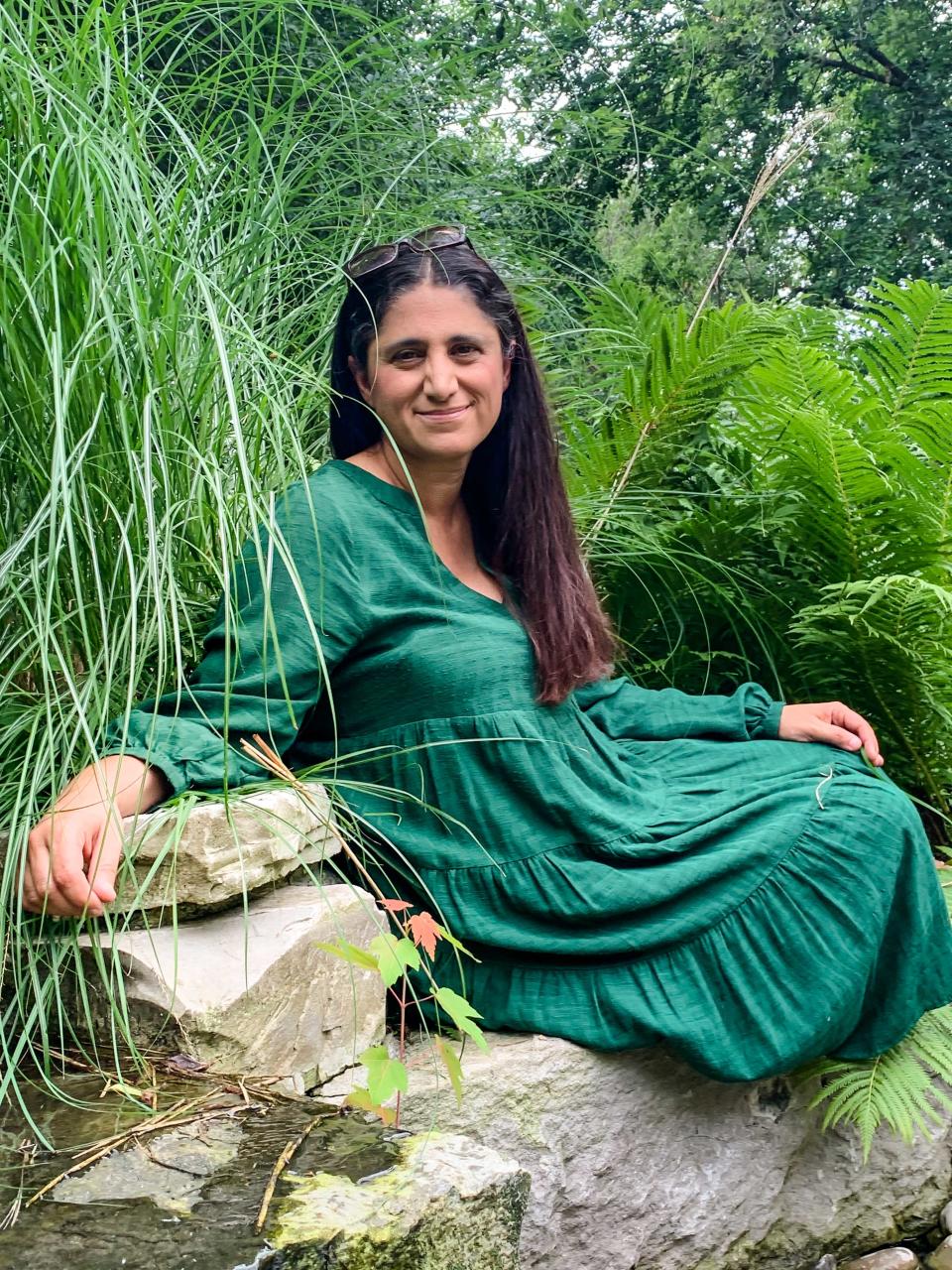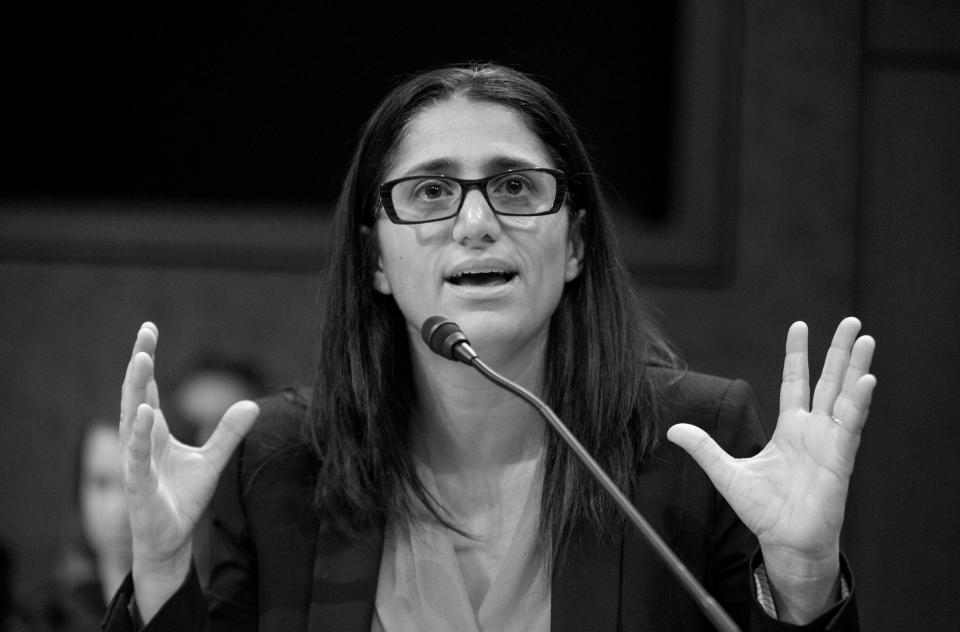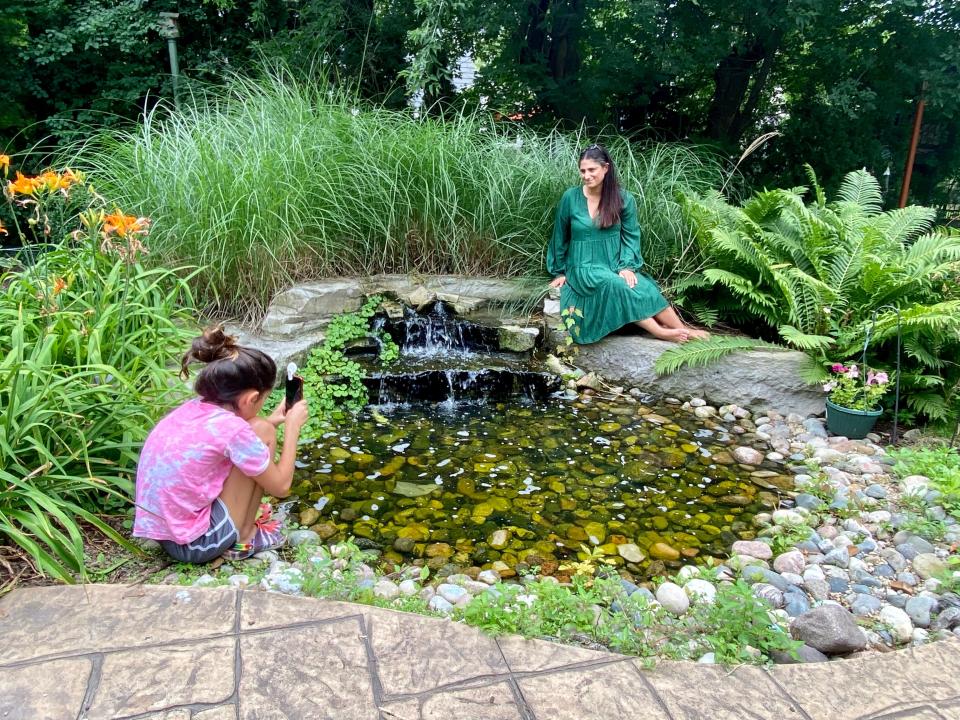Lead was poisoning the water in Flint, Mich. Dr. Mona Hanna-Attisha put her reputation on the line to prove it.
Dr. Mona Hanna-Attisha is one of USA TODAY's Women of the Century. To commemorate the 100th anniversary of the 19th Amendment, we've assembled a list of 100 women who've made a substantial impact on our country or our lives over the past 100 years. Read about them all at usatoday.com/WomenoftheCentury.
Dr. Mona Hanna-Attisha couldn't wait. The pediatrician had found elevated lead levels in the blood of children in Flint, Michigan. She had proof the city's water, piped in from the Flint River, was poisoned with lead.
In September 2015, she sounded the alarm.
"As doctors and as academics, when we do research it gets vetted and your peers look at it. It's a long process," Hanna-Attisha said. "I did something totally disobedient in the academic doctor world: I literally walked out of my clinic and I stood up at a press conference and shared this research. Because there was no time. Every day that went by was another day that was putting our children at risk."
She said she felt great for about a half an hour after going public. "I'm like, 'Yes, this is awesome. I'm protecting kids. Things are going to change.' "

But that didn't happen. Shortly after she shared the science, the state said she was wrong, that her research wasn't consistent with their larger surveillance data. "Words that were said was that I was an unfortunate researcher," she said, "that I was causing near hysteria, which is also sexist."
She said officials had been dismissing the concerned people of Flint – parents, religious leaders, journalists, activists – for months. "I never should have had to do that research. Obviously the water crisis never should have started. It should have stopped when that first mom held a jug of brown water."
She said she felt tiny, defeated. "I had an overwhelming sense of imposter syndrome, that maybe I shouldn't have done this. Maybe I should have just kept going about my business as a busy mom, pediatrician, wife.
"Nothing can prepare you for when the entire state goes after you and tells you you're wrong."
Of course, she wasn't wrong. Neither were all the others who'd been demanding change for Flint, a city with a majority Black population. The city had begun using Flint River water in April 2014.
"So it took awhile," said Hanna-Attisha, now an associate professor of pediatrics and human development at Michigan State University, "but finally with teamwork and persistence and more science, we did speak truth to power."
Question: How is the quality of water in Flint now?
Dr. Mona Hanna-Attisha: Just a few weeks after (the press conference), we switched back to Great Lakes water. So that was in October of 2015. And since then our water quality has been improving over time. However, the year and a half that we were on this super-corrosive water damaged our lead pipes, and those are being replaced right now. Within a few months this year, in 2020, those pipes will all be replaced. And that is a huge success, we'll only be the third city in the country that has replaced our lead pipes. But until those pipes are replaced, people are still on the precautions to filter their water and to use bottled water.

And how are the kids who were exposed to the lead?
We've launched something called the Flint Registry that's supported by the Centers for Disease Control, where we are identifying those who were exposed. Most importantly, getting them connected to the services to promote their health and development and following them over time. We are starting to get that data right now about how that population of children and even adults are doing. ... There's concerns with development and behavior and lots of other potential issues that may have been related to this water crisis.


It was dinner with a friend from high school, an environmental engineer, that started your research.
So we were hanging out, having a glass of wine, kids are playing, my husband was barbecuing. That's when she shared that the water wasn't being treated properly and it was missing this important ingredient called corrosion control, which I had never heard of before then. And that without this ingredient there would be lead in the water.
What I knew at that moment is that my life would never be the same. When I heard the word "lead," there was no going back, there was only going forward. As a pediatrician, as somebody in public health, we know what lead does. It's a potent irreversible neurotoxin. There's no safe level. We respect the science of what lead does. And when I heard that word in my house, in my kitchen, with my high school girlfriend, I knew what I had to do.

Are you registered to vote? Take the first step to making sure your vote counts.
So you looked at the blood work of the kids to look for an elevated level of lead exposure?
Yeah. The research that I did was to see if children were being harmed by the lead in water. The folks in charge kept saying everything was all right, and there was no problems, all the moms and the activists and the journalists and the water scientists were being discredited and dismissed when they were bringing up any concerns.
I knew that if I was going to make a dent in this crisis, I would have to prove that our children were in harm's way. I tried to get that data from our state and our county health departments. However, they weren't willing to share that information. So I quickly conducted the research using blood lead data from our own medical records in the hospital (Hurley Children's Hospital). It was research that probably would have taken like six months time. It took like a matter of weeks because I couldn't sleep. I literally couldn't sleep without knowing what was happening to our children. I also stopped eating. I lost about 30 pounds.

Tell me about your parents, your childhood, your background.
I wasn't supposed to be in this country. It wasn't part of my parents' master plan. And I think like most immigrants that's never part of anybody's plan. We're Iraqi; my father was finishing his studies in the United Kingdom. My brother who's just a year older than me was born in Baghdad, and it was the intent that we would go back home. And it was during that time in the late 1970s that the regime of Saddam Hussein began to become more powerful. My parents saw and feared the rise of fascism in Iraq. They realized that it probably wouldn't be a good idea to go back home, especially with two young children.
Even though that we as a family were able to come to the States, my parents never shielded us from what was happening back home. From the atrocities, kind of the rise in oppression and the dictatorship. And it felt that no matter where I was or wherever we were, that we had a role to play, to especially bring to light injustices.


A car crash sparked your interest in medicine. Can you talk about that?
(During a winter holiday trip) I was about 5 years old; we hit a patch of black ice. The car swerved, it went back and forth and back and forth across the guardrails. This was before the time of seat belts. My brother and I were in the back seat and I was light as a feather. With every back and forth with the car, I was flung in each direction. Then we landed into a ditch. I have no idea how help came, but help came, and I was in a hospital with a broken neck and a fractured jaw.
So I'm lucky to be here. And it was when I was hospitalized that I remember being cared for by an amazing doctor, a woman who also had kind of brown hair and brown eyes and darker skin like me, who was reassuring to me, my family, my mom had very limited English, and who told me that I was going to be OK.
That really kind of sparked my interest in medicine and service. And little did I know that 30 years later I would be the one with a white coat on, telling another community that they were also involved in an accident that wasn't their fault. But it was going to be my job to make sure that they were going to turn out OK.
SUBSCRIBE: Help support quality journalism like this.

How did you stay strong during Flint crisis? What kept you going?
My kids, my Flint kids. When I'm not home, (my children) will tell you that Mom's not home, she's with our 6,000 siblings. My Flint kids are no different than my children. And that's what grounds me to this day. It is their promise, their potential.
The story of Flint, it's not an isolated story. There are kids who grow up in conditions where their life trajectory is altered by their environment. Be it contamination with a toxin or be it overwhelming poverty, or be it lack of food or crumbling schools or the ongoing effects of racism and segregation or unsafe housing. The list goes on and on for too many of our children that limit their promise.
So much of my work in Flint is really asking kids to rise up and to succeed despite all of these overwhelming burdens on their shoulders. We're thinking about it the wrong way. We applaud and we celebrate those kids who despite overwhelming obstacles were able to succeed and go to college and make something of themselves. And we shouldn't be celebrating these exceptions, we should be creating those environments, the systems, where all children can succeed.
Nicole Carroll is editor-in-chief of USA TODAY. This interview has been edited for length and clarity.
More coverage
Women of the Century: They didn’t succeed despite adversity, but often because of it
50 states: Learn about notable women from every state
Who is your Woman of the Century?: Let us know
Recognizing women past and present: See all of our coverage
USA TODAY News · Work done by Women of the Century helps us all
Women of the Century Q&As
Rita Moreno: On bravery, her journey and the importance of listening
Dr. Mona Hanna-Attisha: Lead was poisoning water in Flint, Michigan. She put her reputation on the line to prove it
Ruby Bridges: She was 6 when she walked into a segregated school. Now she teaches children to get past racial differences.
Billie Jean King: On her journey for equal rights in tennis, life: ‘No one ever has it easy’
Jessie ‘Little Doe’ Baird: The language had gone quiet. Remarkably, she brought it back, saving far more than just words
Tarana Burke: On the power of empathy, the building block of the Me Too movement
Cristina Jiménez Moreta: She helped get DACA, now she helps young immigrants find their voice
Dolores Huerta: At 90, the labor leader still works to make a difference
Gloria Estefan: ‘Be in each and every moment, that’s the only thing you really have that’s guaranteed’
Madeleine Albright: On how she became secretary of state, speaking up as a woman and the importance of calling out wrongs
Dolly Parton: ‘The whole magic about me is that I look artificial, but I’m totally real’
This article originally appeared on USA TODAY: 19th Amendment: Flint water crisis elevated by Dr. Mona Hanna-Attisha

